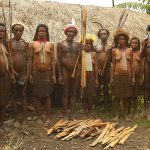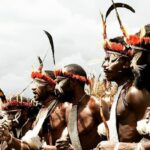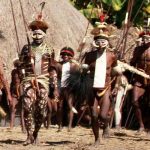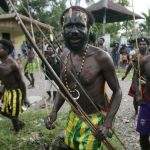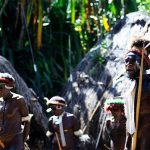Dani
Dani
The Dani The Dani people (also spelled Ndani) are a people from Baliem Valley, Highland Papua, Indonesia. They are sometimes conflated with the Lani group to the west.
They are one of the most populous tribes in the highlands, and are found spread out through the highlands. The Dani are one of the best-known ethnic groups in Papua, due to the relatively numerous tourists who visit the Baliem Valley area where they predominate. “Ndani” is the name given to the Baliem Valley people by the Moni people, and while they call themselves “Hubula”, they have been known as Dani since the 1926 Smithsonian Institution-Dutch Colonial Government expedition to New Guinea under Matthew Stirling who visited the Moni.
 First contact
A small fringe group of the Dani, living south of Puncak Trikora and presenting themselves as the Pesegem and the Horip tribes, were met on 29 October 1909, by the Second South New Guinea Expedition led by Hendrikus Albertus Lorentz, who stayed several nights in their village.
First contact with the populous Western Dani was made in October 1920 during the Central New Guinea Expedition, which group of explorers stayed for six months with them at their farms in the upper Swart River Valley (now Toli Valley).
The Grand Valley was only sighted on 23 June 1938 from a PBY Catalina by Richard Archbold, who stumbled upon the valley while studying high altitude vegetations in Jayawijaya Mountains.
First contact
A small fringe group of the Dani, living south of Puncak Trikora and presenting themselves as the Pesegem and the Horip tribes, were met on 29 October 1909, by the Second South New Guinea Expedition led by Hendrikus Albertus Lorentz, who stayed several nights in their village.
First contact with the populous Western Dani was made in October 1920 during the Central New Guinea Expedition, which group of explorers stayed for six months with them at their farms in the upper Swart River Valley (now Toli Valley).
The Grand Valley was only sighted on 23 June 1938 from a PBY Catalina by Richard Archbold, who stumbled upon the valley while studying high altitude vegetations in Jayawijaya Mountains.
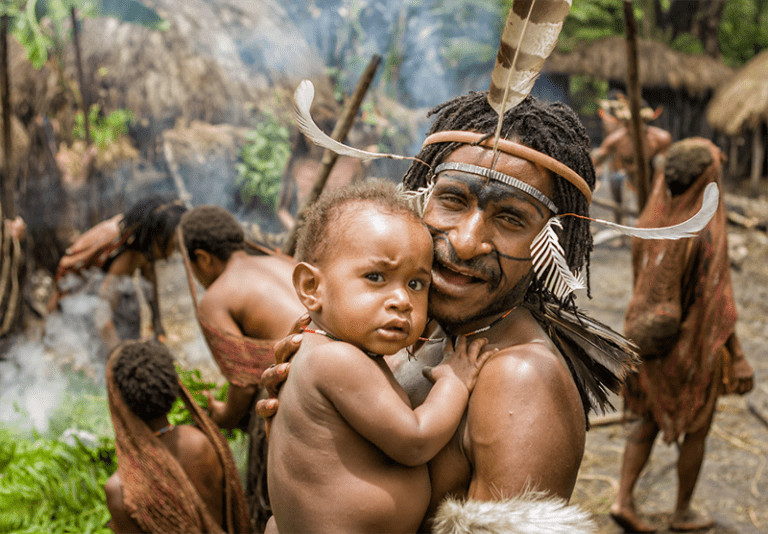 Language
Linguists identify at least four sub-groupings of Dani languages:
Language
Linguists identify at least four sub-groupings of Dani languages:
- Lower-Grand Valley Dani (20,000 speakers)
- Mid-Grand Valley Dani (50,000 speakers),
- Upper-Grand Valley Dani (20,000 speakers), and
- the Lani or Western Dani (180,000 speakers).
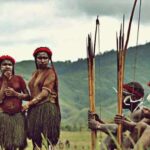

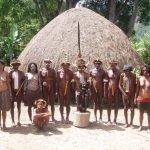
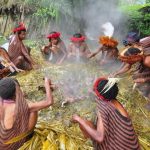
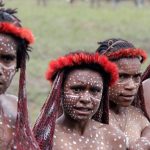
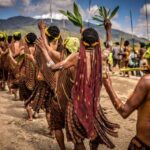
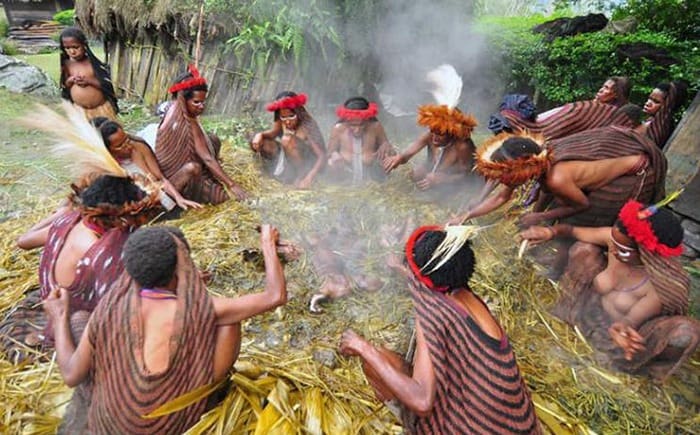 Culture
Sweet potatoes are important in their local culture, being the most important tool used in bartering, especially in dowries. Likewise pig feasts are extremely important to celebrate events communally; the success of a feast, and that of a village big man (man of influence) or organiser, is often gauged by the number of pigs slaughtered.
The Dani use an earth oven method of cooking pig and their staple crops such as sweet potato, banana, and cassava. They heat some stones in a fire until they are extremely hot, then wrap cuts of meat and pieces of sweet potato or banana inside banana leaves.
Culture
Sweet potatoes are important in their local culture, being the most important tool used in bartering, especially in dowries. Likewise pig feasts are extremely important to celebrate events communally; the success of a feast, and that of a village big man (man of influence) or organiser, is often gauged by the number of pigs slaughtered.
The Dani use an earth oven method of cooking pig and their staple crops such as sweet potato, banana, and cassava. They heat some stones in a fire until they are extremely hot, then wrap cuts of meat and pieces of sweet potato or banana inside banana leaves.
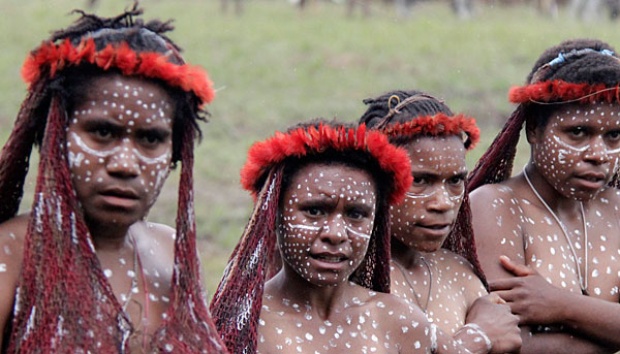 The food package is then lowered into a pit which has been lined with some of the hot stones described above, the remaining hot stones are then placed on top, and the pit is covered in grass and a cover to keep steam in. After a couple of hours the pit is opened and the food removed and eaten. Pigs are too valuable to be served regularly, and are reserved for special occasions only.
Ritual small-scale warfare between rival villages was an integral part to traditional Dani culture, with much time spent preparing weapons and treating resulting injuries. Typically the emphasis in battle is to insult the enemy and wound or kill token victims, as opposed to capturing territory or property or vanquishing the enemy village. Such fighting is no longer done.
The food package is then lowered into a pit which has been lined with some of the hot stones described above, the remaining hot stones are then placed on top, and the pit is covered in grass and a cover to keep steam in. After a couple of hours the pit is opened and the food removed and eaten. Pigs are too valuable to be served regularly, and are reserved for special occasions only.
Ritual small-scale warfare between rival villages was an integral part to traditional Dani culture, with much time spent preparing weapons and treating resulting injuries. Typically the emphasis in battle is to insult the enemy and wound or kill token victims, as opposed to capturing territory or property or vanquishing the enemy village. Such fighting is no longer done.
(Thousands) Population
0
Sub-group of languages
0
 Kinship System
The Dani community is a communal society. So if the house is seen as a physical unit that accommodates the personal activities of its inhabitants, in Dani society the unit of the house is sili.
There are three kinship systems for the Dani community, namely kinship groups, community members, and territorial groups.
Kinship System
The Dani community is a communal society. So if the house is seen as a physical unit that accommodates the personal activities of its inhabitants, in Dani society the unit of the house is sili.
There are three kinship systems for the Dani community, namely kinship groups, community members, and territorial groups.
- The smallest kinship group in the Dani community is the extended family. This extended family consists of three or two nuclear families together living in a residential complex which is closed by a fence (five).
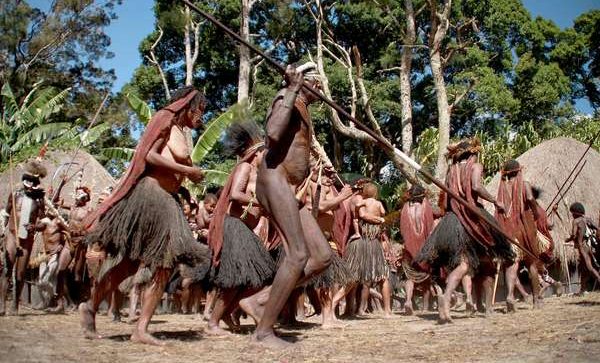
- Part of the community. The Dani community structure is a combination of several ukul (small clans) called ukul oak (large clans).
- Territorial group. The smallest territorial unit in the Dani ethnic community is the housing complex (uma) which is inhabited by extended patrilineal family groups (passed down to sons).
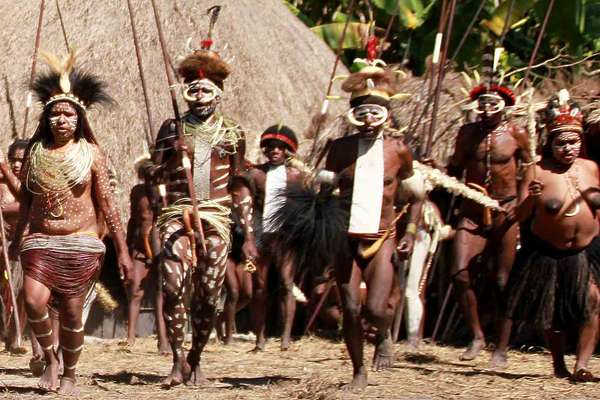 Politics and Society
There is no word leadership in Hubula, so ap kaintek and ap koktek are difficult to translate into Indonesian. The term ap itself in Hubula means an adult man, how come it means big, so ap kok literally means ‘big man’, the plural form of ap koktek. a man of authority (big man) is an anthropological term to describe the person who functions like a tribal chief.
Meanwhile, cloth is more difficult to interpret in Indonesian, because it can mean a leader, a tribal chief, an influential person, an authoritative person. So ap kaintek means big influential men, and so ap kaintek means ‘big influential men’. These people are from the village level (oukul), confederation (ap logalek), to war alliance (oagum).
Politics and Society
There is no word leadership in Hubula, so ap kaintek and ap koktek are difficult to translate into Indonesian. The term ap itself in Hubula means an adult man, how come it means big, so ap kok literally means ‘big man’, the plural form of ap koktek. a man of authority (big man) is an anthropological term to describe the person who functions like a tribal chief.
Meanwhile, cloth is more difficult to interpret in Indonesian, because it can mean a leader, a tribal chief, an influential person, an authoritative person. So ap kaintek means big influential men, and so ap kaintek means ‘big influential men’. These people are from the village level (oukul), confederation (ap logalek), to war alliance (oagum).
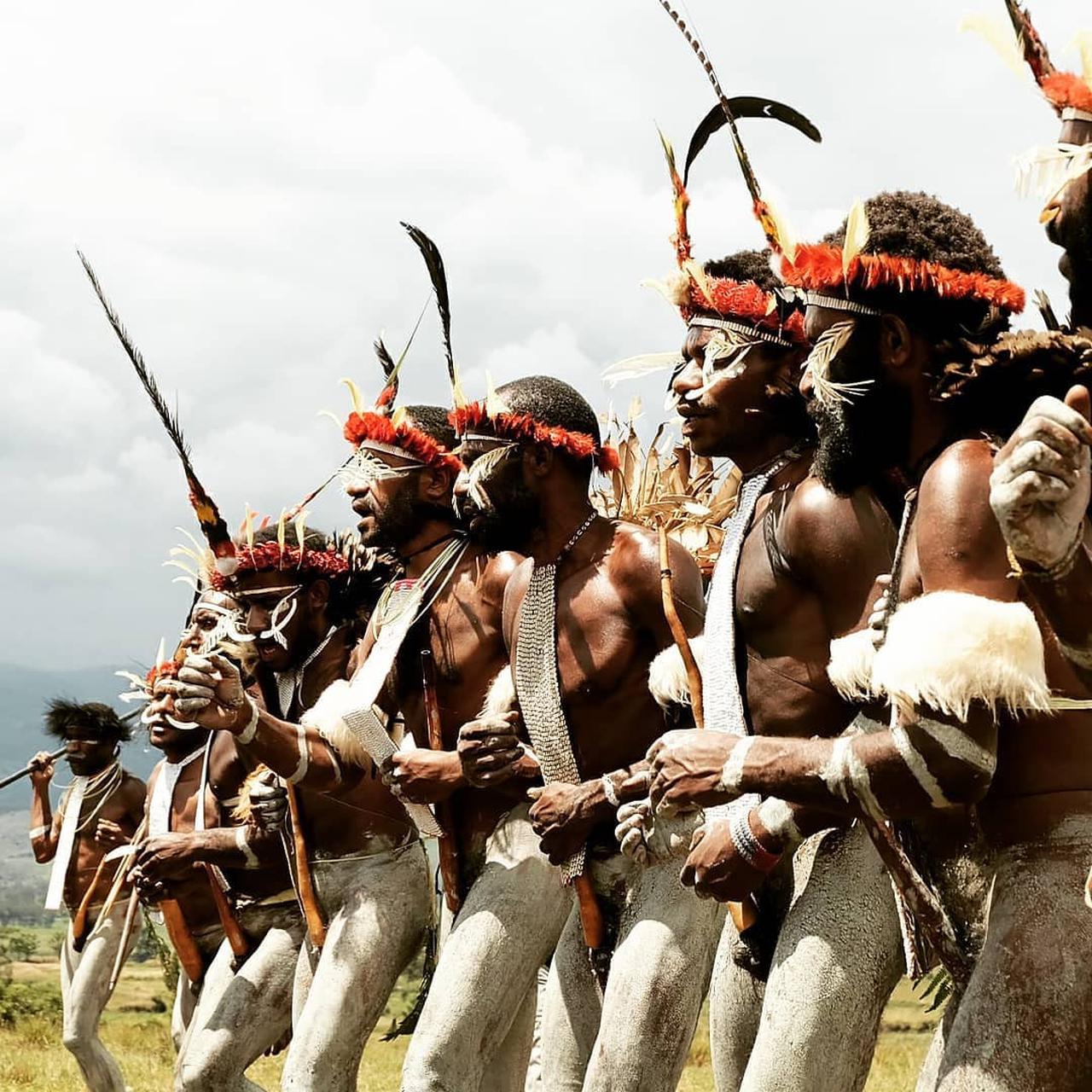 For a higher level, it is called ap kain metek mele (a person who usually stands) means warlord. Meanwhile, in other terms, ap kaintek inetaga pogot (men whose names are skyrocketing) or ap koktek inetaga pogot (big men whose names are skyrocketing) are political leaders or warlords at the confederation or war alliance level.
It needs to be understood from various levels of the Hubula community, it does not have just one leader but ap kaintek based on their past achievements in war and society. Among them there are those who are nicknamed ap etaga pogot (a man whose name is skyrocketing) if his achievements are very good in war.
For a higher level, it is called ap kain metek mele (a person who usually stands) means warlord. Meanwhile, in other terms, ap kaintek inetaga pogot (men whose names are skyrocketing) or ap koktek inetaga pogot (big men whose names are skyrocketing) are political leaders or warlords at the confederation or war alliance level.
It needs to be understood from various levels of the Hubula community, it does not have just one leader but ap kaintek based on their past achievements in war and society. Among them there are those who are nicknamed ap etaga pogot (a man whose name is skyrocketing) if his achievements are very good in war.
Customs of Honoring the Ancestors To honor their ancestors, the Dani tribe makes a symbol of their ancestors called Kaneka. Apart from that, there is also the Kaneka Hagasir, a religious ceremony for the welfare of people’s families and for starting and ending wars.


